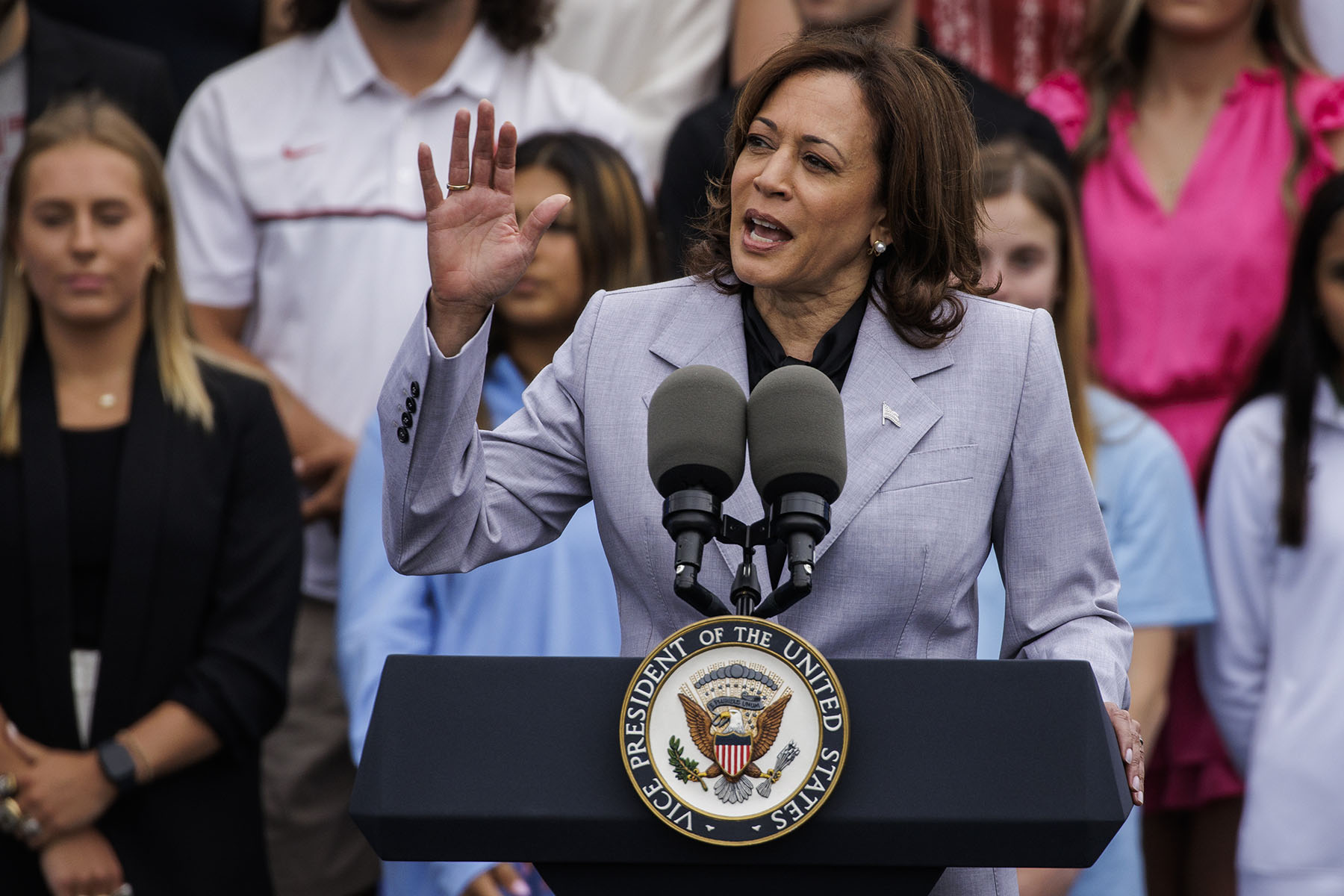Your trusted source for contextualizing politics news ahead of Election 2024. Sign up for our daily newsletter.
Vice President Kamala Harris is launching a tour of college campuses aimed at engaging young students and potential voters focused on abortion rights, gun violence, climate change, voting rights, LGBTQ+ rights and “teaching America’s full history.”
The “Fight for Our Freedoms” tour kicks off with three visits to historically Black institutions. She heads to Hampton University in Hampton, Virginia, on Thursday, followed by visits to North Carolina A&T in Greensboro, North Carolina, on Friday, Reading Area Community College in Reading, Pennsylvania on September 19 and Morehouse College in Atlanta on September 26. Future stops are set for universities in Wisconsin, Arizona and Nevada.
Jessica Herrera, senior communications and marketing director at Supermajority, an organization focused on mobilizing young women behind progressive candidates, said the vice president’s tour is a key step in reaching “high-opportunity” young voters who are registered to vote but not yet regular voters. Those voters — especially young voters of color — are often “under-engaged” by politicians and parties, she argued.
“I am very excited to see Vice President Kamala Harris out on the trail looking at young voters, connecting with young voters because oftentimes, candidates and political parties just ignore those populations,” Herrera said.
In office, Harris has spearheaded the White House’s response to the overturn of Roe v. Wade, advocated for abortion rights and measures to stem gun violence, and taken aim at Republican officials for backing educational standards that she and the White House argue distort Black history. Harris is also taking on a leading role in raising money for Biden’s 2024 reelection bid in the third quarter of 2023, Bloomberg and Axios reported, headlining high-dollar fundraisers attended by wealthy donors.
-
More from The 19th
- ‘Fight we must’: Kamala Harris works to rally young voters of color over abortion, democracy
- Kamala Harris returns to Iowa to defend abortion — just as Republican presidential hopefuls descend
- ‘I can’t wait anymore’: This 25-year-old organizer is betting on young and rural voters to flip North Carolina blue
Democratic strategists and youth participation experts said Harris’ tour is notable for making early and intentional outreach to young potential voters and voters of color — instead of just visiting or campaigning at large flagship universities the summer before an election.
In addition to visiting historically Black colleges and universities in key electoral states, Harris also plans stops at Hispanic-serving institutions, community colleges, state schools and apprenticeship programs.
“It’s really refreshing to see this sort of early engagement,” said Eve Levenson, a Democratic strategist, organizer and board member of Voters of Tomorrow, a youth voter participation organization.
“I think the fact that this engagement is coming from the White House and not necessarily the campaign is also important, because it shows an emphasis on looking at young people not just as voters to turn out, but as important organizers and an important constituency, we believe, to the present and future of our country,” she added.
Levenson said that the vice president resonates with young voters and organizers — and that her presence on campuses has the potential serve as an “inflection point” to inspire young campus organizers.
Members of Generation Z, born from 1997 to 2012, made up the entire 18-to-24 age group for the first time in the 2022 midterms. Census data shows that 28.4 percent of Gen Z cast ballots in 2022, a higher turnout than millennials or Generation X showed in their first midterm elections, according to an analysis by CIRCLE at Tufts University, which researches youth voter turnout and civic engagement. And 31 percent of voters under 30 cast a ballot in 2022, the third-highest youth voter turnout in the past 50 years.
“Generation Z has really come into politics as a force,” said Abby Kiesa, deputy director of CIRCLE. Young voters, she said, have made their mark not just in their turnout rates in the past three election cycles but in the strength of their support and how they influence which issues are discussed on the campaign trail.
Voters 18 to 29 backed Democrats by a 28-point margin in the 2022 midterms, exit polls show. Young people also favored Democratic candidates in critical 2022 Senate and gubernatorial contests by larger margins than voters in the 30-44 age group, showing the significant potential of young voters to sway elections in battleground states.
While Generation Z overwhelmingly backed Democratic candidates in 2022, nearly 2 in 5 voters 18-29 did not identify with either major political party. Experts and advocates argue that that trend reflects how Generation Z responds better to messages of issues and values from trusted messengers and people in their community, rather than starkly partisan messages.
And despite a high overall turnout for Gen Z in 2022, young White voters and voters with a college degree turned out at higher rates than young Black voters, particularly Black men, and those without college degrees, what Kiesa called a “systemic issue” with the resources and encouragement afforded to different groups of youth. But appealing to issues and values, she said, has a better chance of breaking through.
“They’re engaged in their communities, either online or in real life. They’re engaged on issues related to those communities, and they want to participate in and take part, they just don’t always identify voting as a tool in that toolbox,” Herrera said. “There’s a lot of energy and interest in the issues, in the same shared values, it’s really just making clear that voting is something you can utilize to exercise your power.”
Disclosure: Supermajority has been a sponsor of The 19th.







